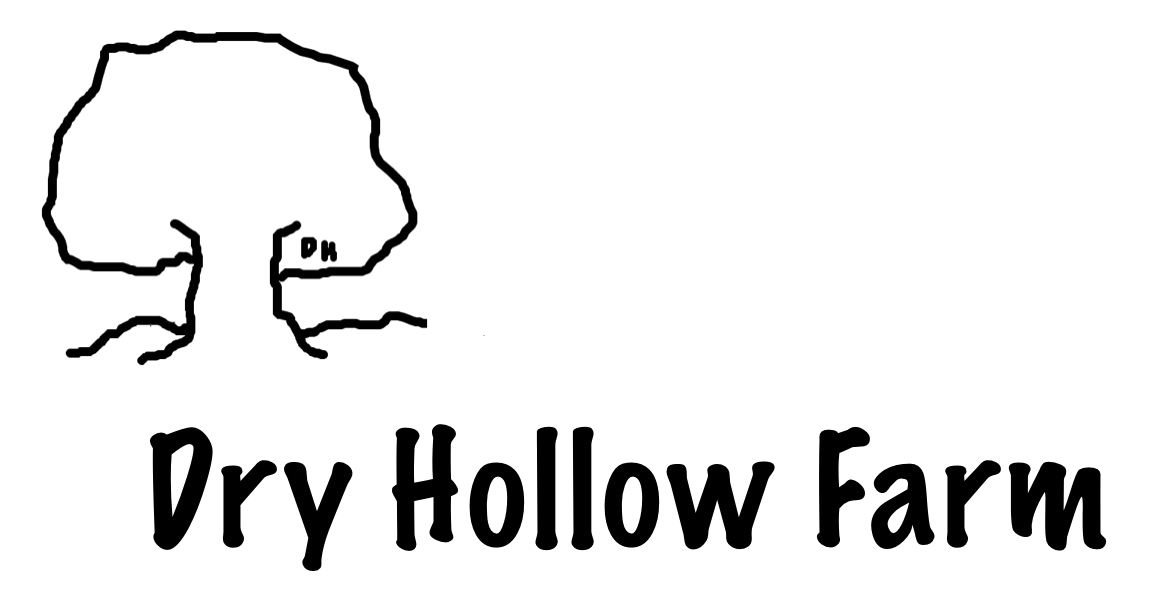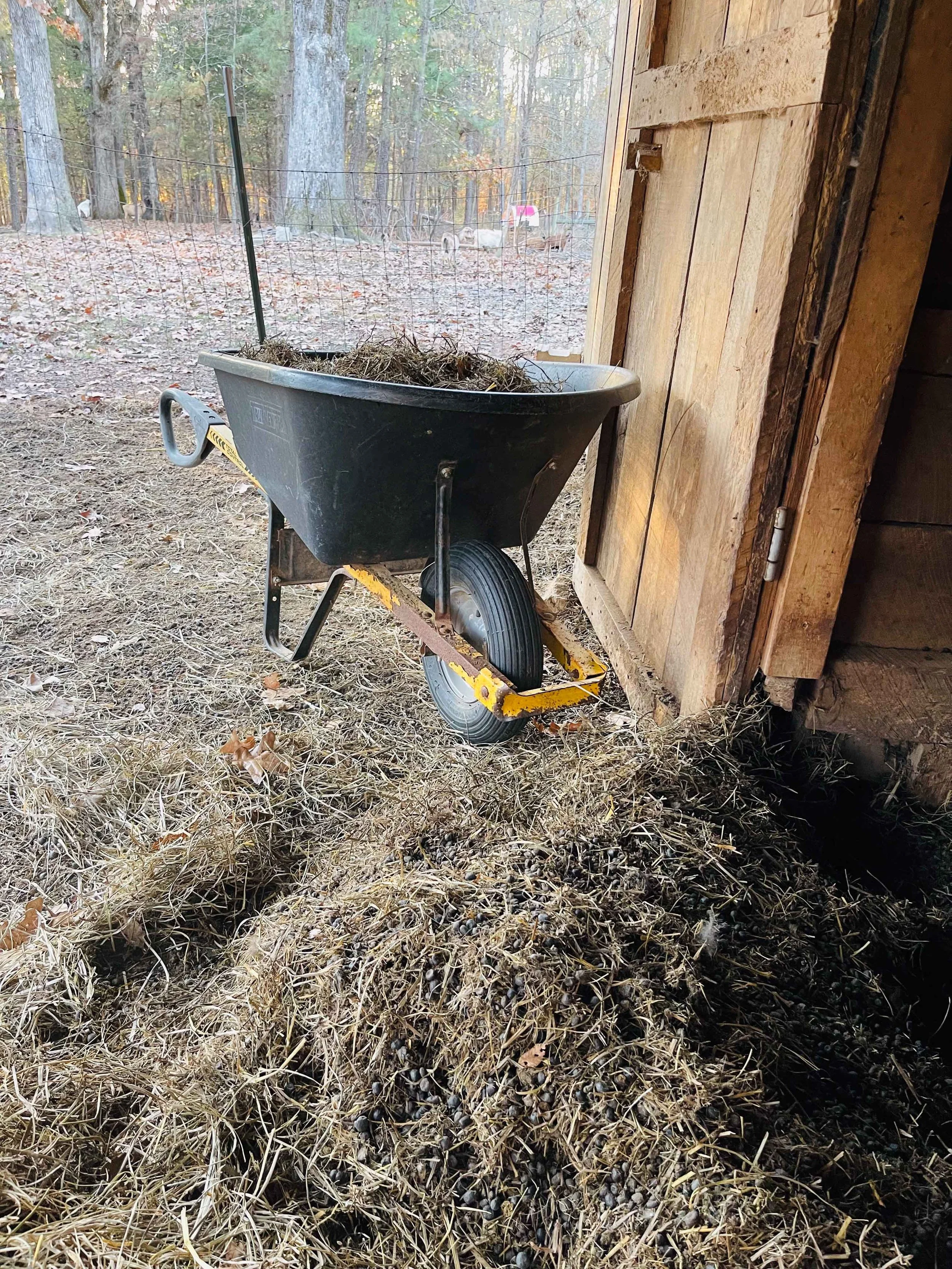In 2023, Dry Hollow Farm is celebrating its 10-year anniversary!
Ten years ago, we had never …
owned a sheep, goat, or livestock guarding dog
driven a t-bar into the ground
made a single bar of soap by hand
raised luffa gourds
pulled a newborn out of any species of animal
handled fleece or felted wool
hand or machine milked an animal
developed or updated a business website
made a social media post of any variety
itemized financial spreadsheets…
The intent of this blog is to share our stories, our experiences, our successes, and our failures.
Feel free to contact us with any questions or ideas you would like for us to address. Although we have experienced many things, the learning process is ongoing and every-changing!
Thoughts for Prospective Goat Owners
Many people who visit Dry Hollow Farm, stay in one of our cabins, or speak with us at events are considering goats, whether as pets or as livestock. After interacting with our crew, they have a number of questions about their care, their habits, and their milk.
Summer Rotational Grazing
There are a number of factors that determine when we move all or part of our goat herd from one pasture to another. Rotational grazing is an important part of parasite control as well as promoting the vegetaion our goats best like to consume.
Choosing a Pasture
At Dry Hollow Farm, our grazing land is divided into three separate areas, each with a mix of open pasture and woods. Within these areas, sets of gates allow us to block off areas, if needed. Rotational grazing for livestock allows the movement of animals from one paddock to another which reduces the dangers of overgrazing, including poor nutritional intake, parasite control, and vegetation disappearance.
Summer Soapmaking #2
After last week’s discussion of how we determined our approach to making soap, this week we revisit the soap-making process itself. Our approach is small-scale with each pour creating twenty-two bars of standard soap after an hour’s processing time. It is impossible to rush the process or increase the number of bars without retreating from our handcrafted, artisan approach to making soap.
Summer Soapmaking #1
Although we handcraft goat milk soap every month of the year, there are two seasons when we make a concerted effort to produce as much as humanly possible: mid-winter and mid-summer. In January and February, we use the long, dark winter evenings to restock our soap inventory after the rush of the Christmas season. In mid-summer, we create as many bars of soap as we can in preparation for our fall festival events. Although we maintain steady sales throughout the year, September through December is our heaviest buying season.
Trimming of the Hoofs
Every two to three months, we schedule hoof trimming for the herd. Multiply our head of goats by four, and it’s easy to understand why this is not our favorite farm task! Nor theirs …
Herbal Choices and Challenges
Because our agricultural enterprise is not a hobby farm but rather a growing agribusiness, we spend time with product research and development. Over the past two years, we have turned our attention to producing dried herbs, herb-infused oils, and herbal soaps. After direct-selling plants from the Herb Shack this spring and early summer, we now include a variety of herbal products in the Soap Shop and on our website.
Here Come the Luffas
As we progressed in our soap-making skills and product offerings, we began to investigate other forms of produce for our farm that will add diversity and interest to our soap products. Growing luffa gourds is a significant part of this product diversification.
View fullsize
It’s a Sedge, not a Sage
My husband is from western Tennessee. I am not. Thus ensues the battle of words regarding a very pesky, unwanted grass that grows in portions of our pastures. Locals refer to this as sage grass, but for me, sage grass is something that turns into tumbleweeds in the American Southwest and rolls across the screen in a John Wayne western.
After the Sheep-Shearing
Our first action after shearing is to skirt the fleece and remove all the bits and pieces of wool that are filled with muck from the animal’s underbelly or backside. These scrappy pieces are of no use, and we throw them away. What remains is the beautiful, thick fleece ready for working.
Sheep-Shearing Drama
For ten years, we raised Jacob sheep. This is an heirloom breed of sheep, providing both meat and wool for the shepherding farm. Jacobs will no provide as many pounds of meat per animal as true meat breeds, but artisan crafters value the coarse Jacob wool for hand-spinning, knitting, and felting.
The Value of Jewelweed
Every spring we anxiously await the greening of Dry Hollow Farm. Trees, grass, shrubs, garden plants, flowers - it seems as if overnight an explosion of green emerges to replace the browns and grays of winter. Growth is rapid, and we soon find ourselves mowing, pulling weeds, and trimming shrubs. As daylight hours lengthen, so do our outdoor work hours and exposure to some not-so-friendly plants.
Spring Barn Cleaning
Although our dairy goats have several acres of pasture and woods to roam, they spend much of the cold, damp winter months hanging out at the hay feeder attached to the barn under the back shed roof. In the daylight hours they stand placidly munching mouthfuls of hay; every night they sleep in piles in the two open barn stalls provided.
What the Woods Provide
For any farm enterprise, there is always a need for wood that does not rot. Fence posts, garden bed borders, animal shelters, poles - all require wood that will withstand heat, humidity, cold, and general wear and tear.
Our Multi-Purpose Greenhouses
Our primary reason for building two greenhouses was the obvious one - starting seeds and nurturing plants when outdoor temperatures fall.
The Threat of Trees
We maintain over two miles of fencing at Dry Hollow Farm. Although we have many acres of open pasture, we also offer a variety of wooded paddocks for our goats who often prefer briars and leaves and saplings to pasture grass. For this reason, trees border much of our fencing. This means we must walk our fence line after every passing thunderstorm.
Our Milking Strategy
Every bar of our goat milk soap contains 22 % raw goat milk. What does this mean? We milk goats!
Protecting the Barn
Our first summer at Dry Hollow Farm, a tiny female kitty wandered down the driveway. She was emaciated, limping, and loosing one eye ball. For the next month, we nursed her back to health. She was the first animal resident of Dry Hollow Farm, and when she gave birth to a litter of four kittens, she officially became Mama Kitty.
Free-Range Chicken Life
Visit our farm any day between 6 am and 5 pm (give or taken an hour depending upon the time of year) and you will be greeted by a passel of free-ranging chickens and roosters. They have the run of the farm and spend their days searching for tasty snacks as they wander.
The End of a Decade
This past week we sold our entire flock of Jacob sheep. The pastures are a little quieter now (though our goats create plenty of noise on their own). Although we miss watching the ewes and rams and little ones, it was the right decision for us at this time. Why?




















